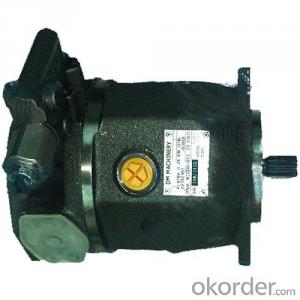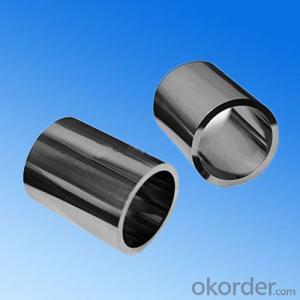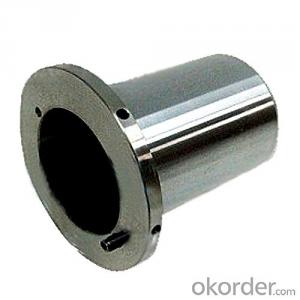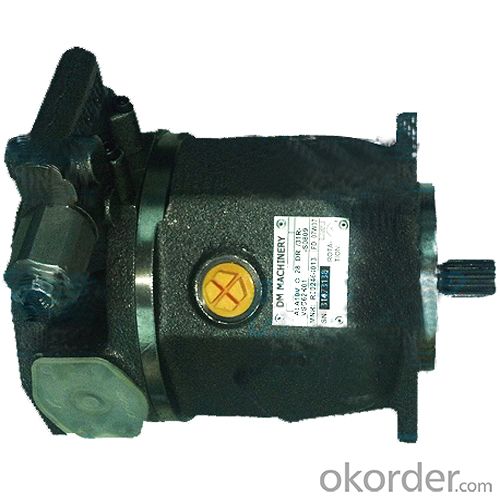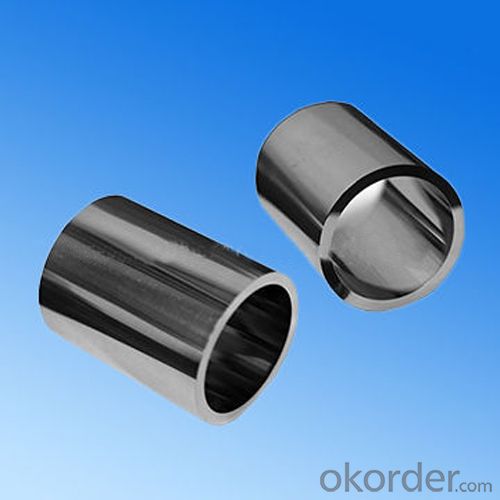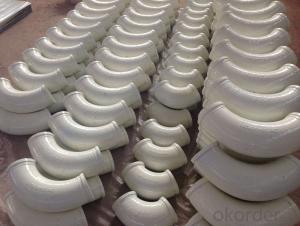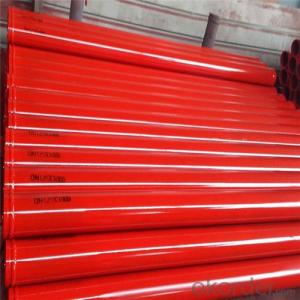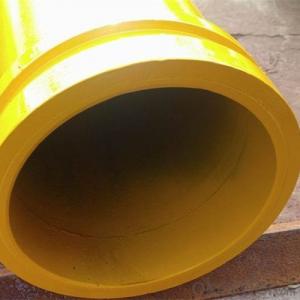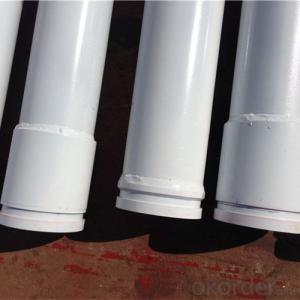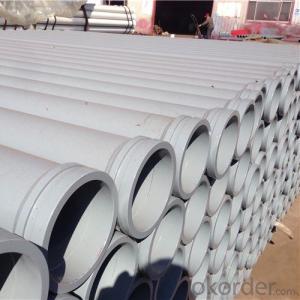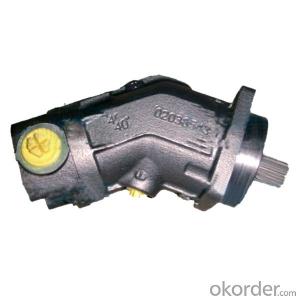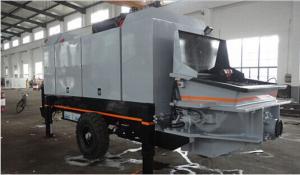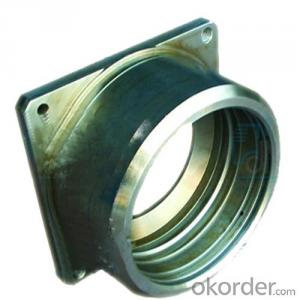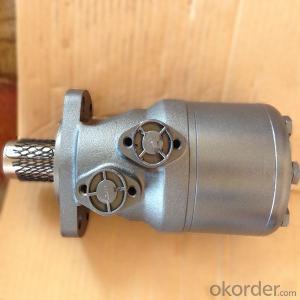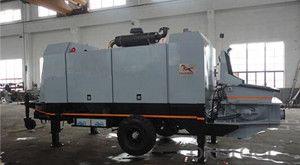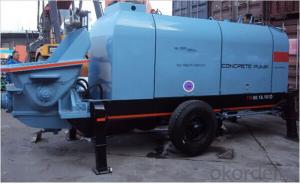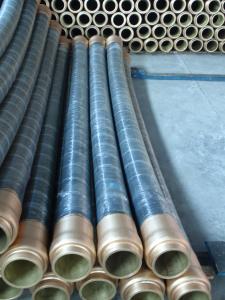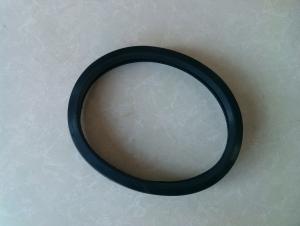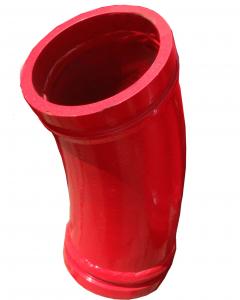Hydraulic Pump Concrete Pump Parts A10VO28
- Loading Port:
- Shanghai
- Payment Terms:
- TT OR LC
- Min Order Qty:
- 1 pc
- Supply Capability:
- 1000 pc/month
OKorder Service Pledge
OKorder Financial Service
You Might Also Like
Product information:
Hydraulic Pump is the basic parts among the spare parts of concrete pumps, mainly used in hydraulic system, it is a very important parts of the machine.It is manufatured from main land China.
Features:
Premium quality
· Prompt delivery & seaworthy packing (5-10 days)
Reliable performance
Easy to weld
High safety.
· Professional Service
· Competitive pricing
Measuring of wall thickness from the outside
Low purchase cost
Good functional lifespan
Applications:
Hydraulic Pump is often used in concrete pumps hydraulic system.
Advantages of our products:
Made from 100% virgin raw material
Produced with advanced equipment
All products go through in-process and final inspection
Free technical service online
FAQ:
Q1: How long about delivery time?
A1: Normally we keep the raw materials for old customers and sometime we also keep stock products to make sure delivery time in any emergency cases.
Q2: How do we guarantee the quality of our pipes?
A2: We have established an advanced quality management system which conducts strict quality tests at every step, from raw materials to the final product. At the same time, we provide extensive follow-up service assurances as required.
Q3: How to make a quick resolution for after service?
A3: OKorder and our manufacture both have overseas branches all-around of world, If needed,
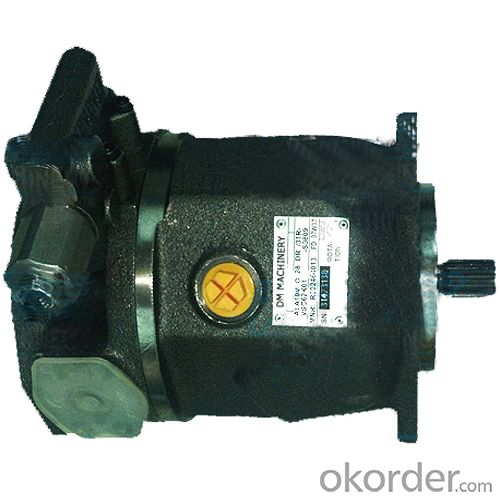
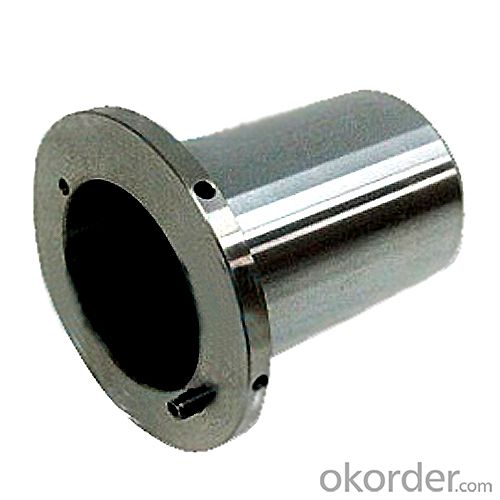
- Q: How can a malfunctioning remote control affect the pumping operation?
- A malfunctioning remote control can significantly impact the pumping operation in various ways. Firstly, a remote control is used to operate the pump remotely, allowing operators to control the pump's speed, direction, and other important settings from a distance. If the remote control malfunctions, operators may lose the ability to control the pump effectively, leading to delays or inefficiencies in the pumping operation. Secondly, a malfunctioning remote control may result in inconsistent or erratic commands being sent to the pump. This can lead to unstable pump performance, potentially causing fluctuations in flow rates, pressure, or other critical parameters. Such inconsistencies can affect the overall efficiency and effectiveness of the pumping operation. Additionally, a malfunctioning remote control can pose safety risks. For instance, if the remote control fails to transmit accurate commands, it can potentially result in the pump operating at undesirable speeds or pressures, which may lead to equipment damage or accidents. Moreover, if operators are unable to control the pump remotely during emergencies or hazardous situations, it could hinder their ability to promptly respond and mitigate risks. Furthermore, a malfunctioning remote control may also impact the monitoring and control systems associated with the pumping operation. Remote controls are often integrated with centralized monitoring systems, allowing operators to collect real-time data and receive alerts or alarms. If the remote control fails, it may disrupt the flow of critical information, making it challenging for operators to monitor the pump's performance, identify potential issues, or make informed decisions. In conclusion, a malfunctioning remote control can have detrimental effects on the pumping operation by impeding the ability to control the pump remotely, causing erratic pump performance, posing safety risks, and hindering the monitoring and control systems. Therefore, it is crucial to regularly inspect and maintain remote controls to ensure their proper functionality and minimize any potential disruptions to the pumping operation.
- Q: What is the function of a concrete pump hydraulic filter?
- The function of a concrete pump hydraulic filter is to remove contaminants and impurities from the hydraulic fluid, ensuring that clean and filtered fluid is delivered to the hydraulic system. This helps to prevent damage to hydraulic components, maintain system efficiency, and prolong the lifespan of the pump.
- Q: Can concrete pump spare parts be coated with UV-resistant coatings for outdoor applications?
- Yes, concrete pump spare parts can be coated with UV-resistant coatings for outdoor applications. These coatings provide protection against the harmful effects of ultraviolet rays, preventing damage and extending the lifespan of the parts when exposed to sunlight.
- Q: What is the difference between concrete pump and ground pump?
- Ground pump only conveying function, the price is cheaper, and now are used to transport mixing machine, the ground pump is a bit uneconomical
- Q: Are there any specific maintenance practices for concrete pump spare parts?
- Yes, there are specific maintenance practices for concrete pump spare parts. Regular inspections, cleaning, and lubrication of the parts are essential to ensure their proper functioning and longevity. It is also important to follow manufacturer's guidelines and recommendations for maintenance and replacement of worn-out parts. Proper storage and handling of spare parts can also contribute to their durability and effectiveness.
- Q: Are there any specific warranty options available for concrete pump spare parts?
- Yes, there are specific warranty options available for concrete pump spare parts. These warranties may vary depending on the manufacturer or supplier, but they typically cover defects in materials or workmanship for a specified period of time. It is advisable to check with the manufacturer or supplier to understand the specific warranty options and terms available for concrete pump spare parts.
- Q: What are the indications of a weak or dead remote control battery?
- The signs of a weak or dead battery in a remote control can vary depending on the type of remote control used. Nevertheless, there are some common signs to look out for. One of these signs is a noticeable decrease in the operating range or distance of the remote control. This means that you may need to be closer to the device you want to control for the remote to work properly. Another sign is when the remote control buttons become unresponsive or require multiple presses to function. Additionally, you may observe a delay in the response time of the device when using the remote control. In certain cases, the remote control may stop functioning altogether, indicating that the battery is completely dead. If you notice any of these signs, it is advisable to replace the battery in the remote control to ensure reliable performance.
- Q: Can I get spare parts for both piston and rotary concrete pumps?
- Yes, you can get spare parts for both piston and rotary concrete pumps. Many manufacturers and suppliers offer a wide range of spare parts for these types of pumps. These parts include but are not limited to pistons, seals, valves, wear plates, hydraulic components, and bearings. It is important to ensure that you purchase genuine spare parts from reputable suppliers to ensure the quality and compatibility with your specific pump model. Additionally, it is recommended to have a regular maintenance and inspection schedule for your concrete pump to identify any worn-out parts and replace them promptly to avoid any potential breakdowns or disruptions in your construction projects.
- Q: How can one identify the need for replacement of concrete pump spare parts?
- One can identify the need for replacement of concrete pump spare parts by observing any signs of wear and tear, such as cracks, leaks, or damage to the components. Additionally, a decrease in pump performance, unusual noises, or difficulty in operation can indicate the need for replacement. Regular maintenance and inspection can also help in identifying any potential issues with the spare parts that may require replacement.
- Q: How often should hopper grate pins be inspected or replaced in a concrete pump?
- To maintain proper functioning and prevent potential problems, it is important to regularly inspect the hopper grate pins in a concrete pump. A suggested guideline is to inspect these pins at least once a month or after every 200 hours of operation, whichever comes first. However, the inspection frequency may vary based on the specific conditions and usage of the concrete pump. During the inspection, it is crucial to examine the hopper grate pins for any signs of wear, damage, or deformities. If any issues are discovered, they should be promptly addressed to prevent further damage and ensure the safe and efficient operation of the concrete pump. When significant signs of wear or damage are observed in the hopper grate pins, it is necessary to replace them immediately to maintain their functionality. It is important to follow the manufacturer's guidelines and recommendations for replacing these pins, as they may differ depending on the specific model and design of the concrete pump. By conducting regular inspections and replacing hopper grate pins in a timely manner, the longevity and reliability of the concrete pump can be enhanced, reducing the risk of unexpected breakdowns and ensuring optimal performance.
Send your message to us
Hydraulic Pump Concrete Pump Parts A10VO28
- Loading Port:
- Shanghai
- Payment Terms:
- TT OR LC
- Min Order Qty:
- 1 pc
- Supply Capability:
- 1000 pc/month
OKorder Service Pledge
OKorder Financial Service
Similar products
Hot products
Hot Searches
Related keywords
